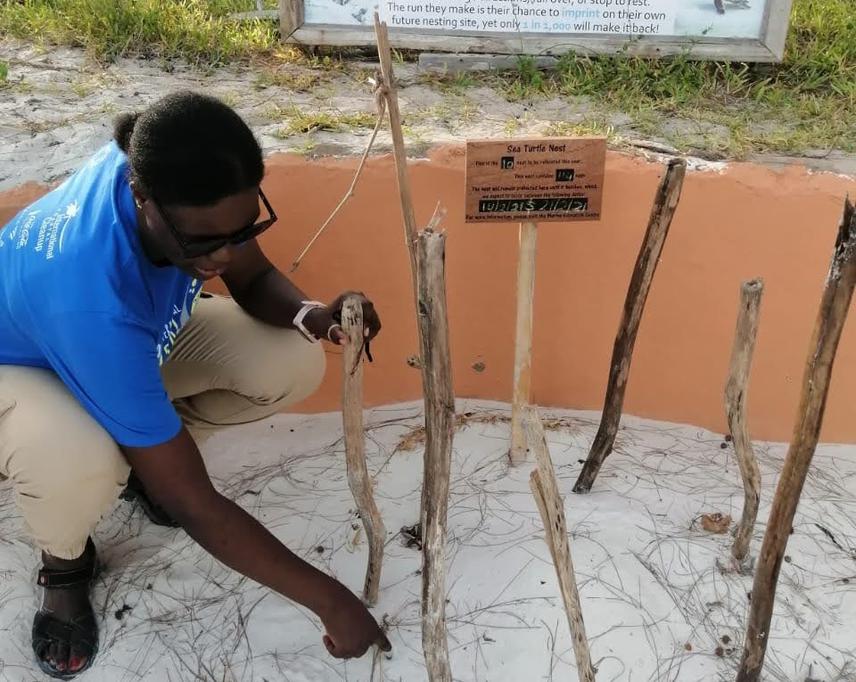Nancy Awuor Oduor
Other projects
8 Jun 2018
Community Based Marine Litter Management for Restoration of Endangered Turtle Habitats along Kenyan Coast I
Despite their legal protection, sea turtles are still being lost through poaching and uncontrolled coastal development due to ignorance, poverty and weak implementation of policies in Kenya. This project will be conducted in selected beaches along Kenya’s South Coast to enhance the recovery and protection of remaining Green, Hawksbill, Olive ridley, Loggerhead and the Leatherback turtle populations that nest, forage and migrate in the region. It will employ the power of education, mentorship, possession and a healthy dosage of entrepreneurial skills i.e. ecotourism and trash to cash initiatives, to create awareness, advocate for turtle management policies, conduct capacity building programs and promote citizen science in monitoring turtle nesting trends, threats and habitat changes. A participatory approach involving local communities, policy makers and managers will be adopted to boost turtle literacy, household income and produce data relevant for implementation of turtle conservation and beach management plans to enhance turtle conservation activities.

Declining sea turtles’ population has been reported worldwide with six of the seven turtle species listed as vulnerable, endangered, or critically endangered on the IUCN Red list (IUCN, 2020). Kenyan seascape harbours five of the seven endangered turtle species known worldwide. Green, Hawksbill and Olive ridley nest and forage in Kenya while the Loggerhead and the Leatherback use Kenya’s waters as migratory routes and foraging grounds. The region is however currently experiencing rapid human population growth accompanied by high level of poverty, ignorance, illiteracy and weak implementation of environmental policies. The turtles have got high cultural and socio- economic values among the Kenyan coastal communities driving their illegal harvesting for meat, eggs, skin, shells and oil with the Green turtle, Olive ridley and the hawksbill being the most exploited species in the region. Few studies conducted on sea turtles have reported a declining turtle population in the area with turtling, fisheries by-catch, pollution, degradation and conversion of critical habitats associated with uncontrolled coastal development, overexploitation of resources, diseases and climate change cited as the major threats.
This project will be conducted in five beaches, Tiwi, Diani, Galu, Kinondo and Shimoni, along Kenya’s South Coast with a total length of about 50 km. The area is a UNESCO recognized cultural heritage partially protected site with critical feeding, breeding and nesting habitats (sandy beaches, mangrove, sea grasses and coral reefs) for all the three nesting turtle species found in Kenya. Furthermore, region supports important tourism and fishing grounds for the local communities. This project will thus work with local communities and relevant stakeholders to map land-use changes, monitoring turtle nesting activities and beach degradations, raise community awareness, advocate for policies, conduct capacity building and sustainable livelihood programs as well as establish joint management actions.
The project team will select and mentor students as turtle ambassadors and training of CBOs on assessment and monitoring of nesting activities and beach quality as well as ecotourism and creation of artefacts from marine litter to diversify their livelihoods and improve their citizen science skills. It expects to improve turtle and environmental literacy, improve household incomes, reduce pressure on turtle and marine resources and provide information that can guide managers in implementing sustainable coastal development, protecting biodiversity, maintaining ecological processes thereby enhancing the conservation status and recovery of the endangered sea turtles and their critical habitats in the project area.